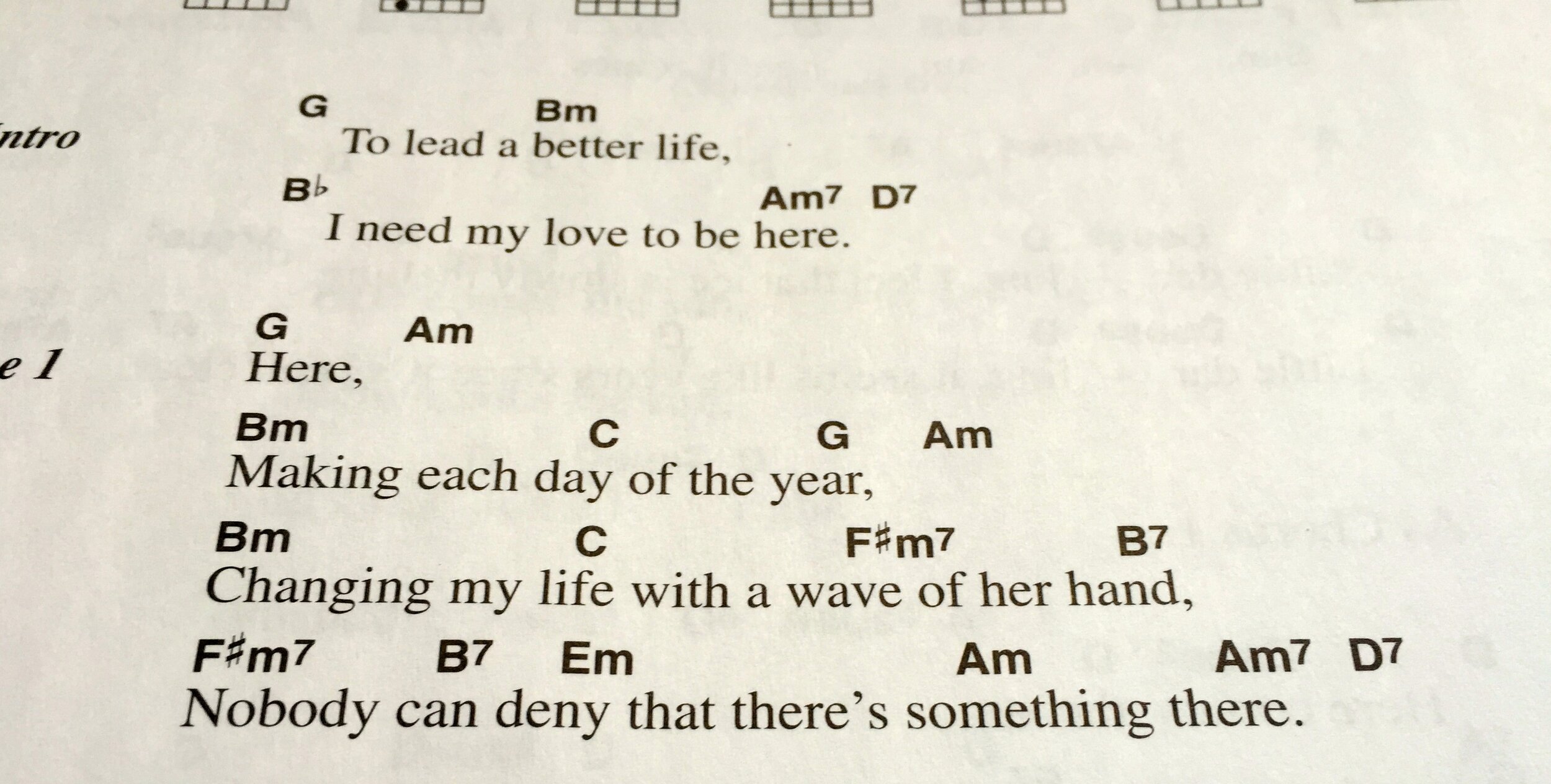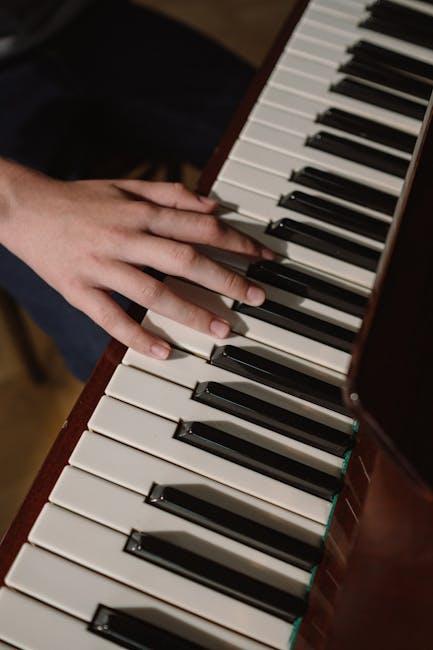Have you ever found yourself staring at a chord chart, feeling utterly perplexed by the mysterious symbols and squiggly lines? Like a lost puppy in a music theory maze, unsure of which path to take? Fear not, dear reader, for we are here to demystify the enigma that is major and minor chord structures. So grab your thinking cap (or propeller hat, if that’s more your style) and prepare to embark on a melodious journey through the whimsical world of music theory. Let’s unlock the secrets of those sneaky little chords that have been keeping you up at night, and emerge as victorious champions of harmony!
Contents
- 1 Understanding the Basic Components of Major and Minor Chords
- 2 Exploring the Intervallic Structure of Major Chords
- 3
- 4 The Role of the Third: Distinguishing Major from Minor
- 5 Practical Applications: Building Chords on a Keyboard or Guitar
- 6 Expanding Your Harmonic Vocabulary: Variations and Inversions
- 7 Listening Exercises: Identifying Major and Minor Chords in Music
- 8 FAQs
- 9 So, there you have it: Major and Minor Chord Structures Unveiled!
Understanding the Basic Components of Major and Minor Chords
Let’s dive into the wonderful world of variations-for-enhanced-guitar-skills/” title=”Mastering Chord Variations for Enhanced Guitar Skills”>major and minor chords, shall we?
First up, we have major chords. These bad boys are the happy-go-lucky bunch of the chord family. They’re like the friend who’s always smiling and telling jokes, making everyone feel warm and fuzzy inside. Major chords are made up of three notes – the root, the major third, and the perfect fifth. When you play a major chord, you can’t help but tap your foot and nod your head along to the infectious cheeriness.
On the other hand, we have minor chords. These guys are the brooding, mysterious loners who hang out in the shadows. Minor chords are made up of the root, the minor third, and the perfect fifth. When you strum a minor chord, you can almost hear the sound of rain falling on a dark, stormy night. They evoke emotions of sadness, nostalgia, and longing – perfect for those melodramatic moments in life.
So, there you have it – the basic components of major and minor chords. Major chords are like the life of the party, while minor chords are the deep thinkers who ponder the meaning of existence. Next time you pick up your guitar or sit down at the piano, remember the personalities of these chords and let them guide your musical journey.
Exploring the Intervallic Structure of Major Chords
So you think you know major chords, huh? Well, get ready to dive deep into the intervallic structure of these bad boys and uncover the mysteries hidden within!
Major chords consist of three notes: the root, the major third, and the perfect fifth. But wait, there’s more! Let’s break it down even further:
- The first note is the root, which gives the chord its identity and foundation.
- Next up is the major third, which adds that sweet, sweet sense of harmony and resolution.
- And finally, we have the perfect fifth, giving the chord its full, rich sound that will make your ears sing with joy.
Now, let’s put it all together and bask in the glorious intervallic structure of major chords. It’s like a delicious musical sandwich - with the root as the bread, the major third as the juicy meat, and the perfect fifth as the cheesy goodness holding it all together. Bon appétit!

characteristics-of-minor-chords”>Diving into the Characteristics of Minor Chords
So, you’ve mastered playing major chords and now you’re ready to dip your toes into the murky waters of minor chords. Don’t worry, it’s not as scary as it sounds! Let’s explore the characteristics of minor chords together, shall we?
First off, minor chords have a bit of a moody vibe compared to their major counterparts. They’re like the emo kid of the chord family – always brooding and full of feels. But don’t let that intimidate you! Embrace the darkness and let your inner angst shine through as you play those minor chords.
One key characteristic of minor chords is their bittersweet sound. They can evoke a range of emotions, from sorrow to longing to nostalgia. It’s like listening to a sad song on a rainy day – it’s simultaneously heartbreaking and beautiful. Embrace the melancholy and let your fingers dance across the fretboard with the grace of a wounded swan.
Another interesting thing about minor chords is that they have their own unique colors and textures. While major chords are bright and cheery, minor chords have a depth and complexity that can add a touch of sophistication to your music. Think of them as the dark chocolate of the chord world – rich, intense, and oh-so-delicious.

The Role of the Third: Distinguishing Major from Minor
Have you ever found yourself stuck between a major decision and a minor detail? Well, fear not because the third option is here to save the day! Let’s dive into the world of distinguishing major from minor with the help of our trusty third.
1. **The Major Leaguer** - This is the big picture, the main event, the star of the show. It’s the decision that will have the most significant impact on your life. Think of it as the quarterback leading the team to victory. The major leaguer is bold, confident, and unapologetically in charge.
2. **The Minor Minion** - On the other end of the spectrum, we have the minor minion. This is the small, seemingly insignificant detail that often gets overlooked. It’s the supporting character in the grand scheme of things. The minor minion may not be flashy, but it plays a crucial role in the overall outcome.
3. **The Third Wheel** – Ah, the unsung hero of decision-making. The third wheel is the perfect balance between major and minor, offering a unique perspective that can tip the scales in your favor. It’s the middle ground, the compromise, the silver lining in a sea of options. Embrace the third wheel and watch as it transforms your choices from ordinary to extraordinary.
Next time you’re faced with a major vs. minor dilemma, remember the power of the third. It’s not just a backup plan or a last resort – it’s a game-changer that can elevate your decision-making skills to new heights. So go ahead, embrace the third and unlock the true potential of distinguishing major from minor.

Practical Applications: Building Chords on a Keyboard or Guitar
So you want to learn how to build chords on a keyboard or guitar, huh? Well, you’ve come to the right place! Whether you’re a beginner or a seasoned musician, understanding the basics of chord construction is essential for playing some killer tunes.
On a keyboard, chords are built by stacking notes in intervals. Start with the root note and add the third and fifth notes from the scale to create a major chord. To add some flavor, throw in the seventh note for a dominant seventh chord. And if you’re feeling really adventurous, experiment with adding ninth, eleventh, and thirteenth notes for some jazzy goodness.
On the guitar, chords are formed by fretting multiple strings at once. Need a major chord? Just bar your index finger across the fretboard and strum away. Want a minor chord instead? Easy, just lower the third note by a half step. And if you’re feeling fancy, try out some augmented or diminished chords to really impress your friends.
So there you have it – building chords on a keyboard or guitar doesn’t have to be rocket science. With a little practice and a lot of patience, you’ll be jamming out like a pro in no time. So grab your instrument, get your fingers moving, and let the chord-building magic begin!
Expanding Your Harmonic Vocabulary: Variations and Inversions
So you’ve mastered the basics of harmonics, but now it’s time to take your skills to the next level with variations and inversions. These techniques can add a whole new dimension to your music, bringing complexity and depth that will impress even the snootiest of music critics.
With variations, you can take a simple chord progression and spice it up with unexpected twists and turns. Think of it like adding hot sauce to a bland dish - it can take something ordinary and make it extraordinary. Experiment with different voicings, colors, and tensions to create a truly unique sound that will set you apart from the crowd.
Now, let’s talk about inversions. No, we’re not talking about turning your chords upside down (although that could be fun!). Inversions are a way to re-order the notes in a chord to create a fresh, new sound. By playing the notes in a different order, you can create interesting harmonic movement that will keep your listeners on the edge of their seats.
So don’t be afraid to experiment with variations and inversions in your music. Embrace the unexpected, push the boundaries, and let your creativity run wild. Who knows, you might just stumble upon the next big harmonic breakthrough!
Listening Exercises: Identifying Major and Minor Chords in Music
So you think you’re a musical mastermind, huh? Ready to flex those ear muscles and identify major and minor chords like a pro? Well, grab your headphones and let’s dive into some fun listening exercises!
First up, we’ve got a playlist of catchy tunes for you to groove to. Listen carefully and try to pinpoint whether each chord is major or minor. Don’t worry if you get a few wrong – even the best musicians hit a few sour notes every now and then!
Need a little help deciphering the difference between major and minor chords? Remember, major chords have a bright and happy sound, while minor chords have a darker and more melancholy vibe. Keep those definitions in mind as you jam out to our music selection.
When you’re ready to test your newfound chord-identifying skills, jam out to some tunes and see if you can spot those major and minor chords like a seasoned pro. Who knows, you might just discover a hidden talent for music theory!
FAQs
What exactly is a major chord?
Major chords are like the popular kids in high school – they always seem to be in a good mood. They consist of a root note, a major third, and a perfect fifth, creating a happy and bright sound that’s often associated with feelings of triumph and joy.
And what about minor chords?
Minor chords are the brooding, introspective emo kids of the chord world. They consist of a root note, a minor third, and a perfect fifth, resulting in a darker and more somber sound. Minor chords are often used to convey feelings of sadness, longing, or mystery.
How do major and minor chords differ in terms of sound?
Think of major chords as your annoyingly cheerful friend who’s always ready to party, while minor chords are the friend who’s perpetually stuck in their feelings. Major chords sound bright, happy, and stable, while minor chords sound dark, moody, and unresolved.
Can major and minor chords be used together in a song?
Absolutely! Major and minor chords can actually complement each other quite nicely in a song. By alternating between major and minor chords, songwriters can create a sense of tension and release, adding depth and emotional complexity to their music.
Are there any practical tips for identifying major and minor chords?
One handy trick is to listen to the third note in the chord – if it sounds happy and bright, you’re dealing with a major chord. If it sounds sad and moody, it’s most likely a minor chord. Another tip is to pay attention to the overall vibe of the chord progression - major chords tend to sound uplifting and positive, while minor chords evoke a sense of melancholy and introspection.
So, there you have it: Major and Minor Chord Structures Unveiled!
As we wrap up this enlightening journey into the world of music theory, we hope you feel a little less mystified by those major and minor chords. Remember, when in doubt, just remember that major chords are like the hero of the story – bold, confident, and in charge. And minor chords? Well, they’re like the mysterious sidekick – adding depth and intrigue to the music.
Now go forth and impress your friends at the next karaoke night with your newfound knowledge of chord structures. And always remember, when in doubt, just strum it out!



